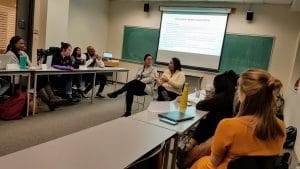Fostering community relationships is important for U of T and one of President Gertler’s priorities. And while many courses have integrated student learning into the community, a Factor-Inwentash Faculty of Social Work course launched this January takes it a step further. Social Work and Disability Practice (SWK 4637) brings the community into the classroom, in a meaningful way.
Keith Adamson (assistant professor, teaching stream), having a background as a clinician in a paediatric hospital, understood the difficulties clients and families have connecting with clinicians. When asked to create a course on disabilities, he decided to use this opportunity to enter into a conversation with a number of stakeholders, bringing together faculty, students, community members and other partners.
Adamson believes that “Professors have an obligation to understand what are some of the problems in the community ( as perceived by the community) in order to help future generations of students to respond to some of those problems, [and] help bring inquiry and evaluation to those problems.”
In order to discover a new approach to learning that would foster a greater understanding between clinicians-to-be and clients, Adamson approached faculty members, students with disabilities in the Faculty, individuals who belonged to the disability community as well as organizations who worked and advocated on behalf of people with disabilities to get their perspective on how the course should be built.
“We all came together and we all negotiated what was going to be on curriculum and how the course was going to be taught, and how we were going to evaluate students. Every single part of the course was developed in collaboration,“ says Adamson.
As a result, community members became active developers of the course content and course delivery. The course introduces a novel teaching model where a consistent group of clients and families co-teach alongside the professor for the duration of the semester.This approach to teaching allows students to get hands-on experience before entering the professional field, and gives community members a platform where their voices are heard.
“I would even suggest that it is sometimes hard for students to go out into the practicum and meet clients. They get nervous, they get anxious. Imagine if their first interaction with clients is in the classroom, where they get to talk to them, and ask them questions and hear about their lives. I think it impacts them very differently when they go back to practicum setting” says Adamson.
Adamson and his partners started by defining their desired learning outcomes for the course. “Even though the work we were doing, wasn’t within a corporate setting , I still wanted us to have a shared vision for the work we were going to do together. A vision that guided why we were all working in that room, even though we had different narratives and histories.”
The model, where community members are active participants and co-teachers of the course ensures that multiple perspectives are shared. A caregiver of a 14-year-old teenager, Jean Hammond, notes that she got involved because of her interest in helping social workers understand what it is like for the family to navigate social systems and healthcare system. Such perspectives indeed can only be learned in a collaborative two-way process. Families who have personal experience in the topics, will provide their first-person narratives, facilitate and participate in classroom discussions. To support their role as educators, Holland Bloorview Kids Rehabilitation Hospital, Surrey Place and University Health Network have collaboratively developed a training program specifically for this course, where the clients and their caregivers are given training in three major components – teaching skills, facilitation skills and experiential learning. Each year the course will receive a new cohort of service user co-teachers.
 There is a potential to bring these teaching innovations to more courses in Social Work, as well as other disciplines. Currently Adamson is undertaking a small research project, supported by the School of Graduate Studies, to study the development of the curriculum. In 2003, the UK government made the involvement of (service users) client’s and their families mandatory for social work education and all health care disciplines but more work needs to be done to ensure clients and families are involved in social work education in Canada and the United States. Therefore, Adamson’s more unique approach to course and curriculum development holds great potential for pedagogical research and pedogogical contributions.
There is a potential to bring these teaching innovations to more courses in Social Work, as well as other disciplines. Currently Adamson is undertaking a small research project, supported by the School of Graduate Studies, to study the development of the curriculum. In 2003, the UK government made the involvement of (service users) client’s and their families mandatory for social work education and all health care disciplines but more work needs to be done to ensure clients and families are involved in social work education in Canada and the United States. Therefore, Adamson’s more unique approach to course and curriculum development holds great potential for pedagogical research and pedogogical contributions.
Working in partnership with the community and clients also has the potential to shift power relations inherent in the professional helping relationship. Adamson hopes that the course delivery model inherent in the Social Work and Disability Practice course can change the whole system by creating a future generation of healthcare professionals who see the relationship with clients in a non-hierarchical way. When dealing with marginalized populations, transforming the way we deliver education is particularly important. In the context of the social work and disability course, it humanizes individual experiences and makes clients ‘partners in care’.
“I believe in my heart from the social work values perspective, this is what social work should be doing, we always talk about community and empowerment – all of these things. Well this is a living example of empowerment and social advocacy in higher education institutions. I don’t want to just say that social workers do this, I expect my students to live it and I have to live it as a Professor of Social Work. I don’t think I am different, there are no excuses for me not to live it. And I hope that my example of living it ( in the classroom) will help students to live it too,” says Adamson.
There are 20 students enrolled in the course this year, and as Adamson mentions the course has already generated a great deal of enthusiasm amongst them: “Many students have come to me and said that they are really interested in the course and excited to see what it is going to look like”.
There are two student evaluations that are built into the course – midterm evaluation and final evaluation. It includes questions about the student learning experience and the experience of the student’s co-teaching model. In addition, client and family co-teachers will be asked to provide feedback. In the future we will undertake a more formal , rigorous evaluation of the course in order to assess the co-teaching model and the value of the client and family as faculty training program.
For Adamson, “The co-production model that involved clients and families in the development and delivery of the disability course would be the catalyst to transform social work education, develop the next generation of social work leaders and inspire a ripple effect of change at universities everywhere”.
As an educator, Adamson hopes that this innovation will transform the way knowledge is produced and delivered as well as inspire more professors who want to do this kind of pedagogical work. As a social worker, he sees the course as a vehicle for advocacy, where the University can help a community raise their voices within the classroom for social change and therefore create a generation of social workers who are also advocates for disability.
Adamson, too, strongly believes that this is the way to the future: “Besides the fact that early research is very promising about this pedagogical approach, I feel from the bottom of my heart, that it is the right way. It is the right way to teach, it is the right way to build knowledge, it is the right way to build advocacy into how we teach, and it is the right thing to do for our students.”
By Anna Aksenovich























